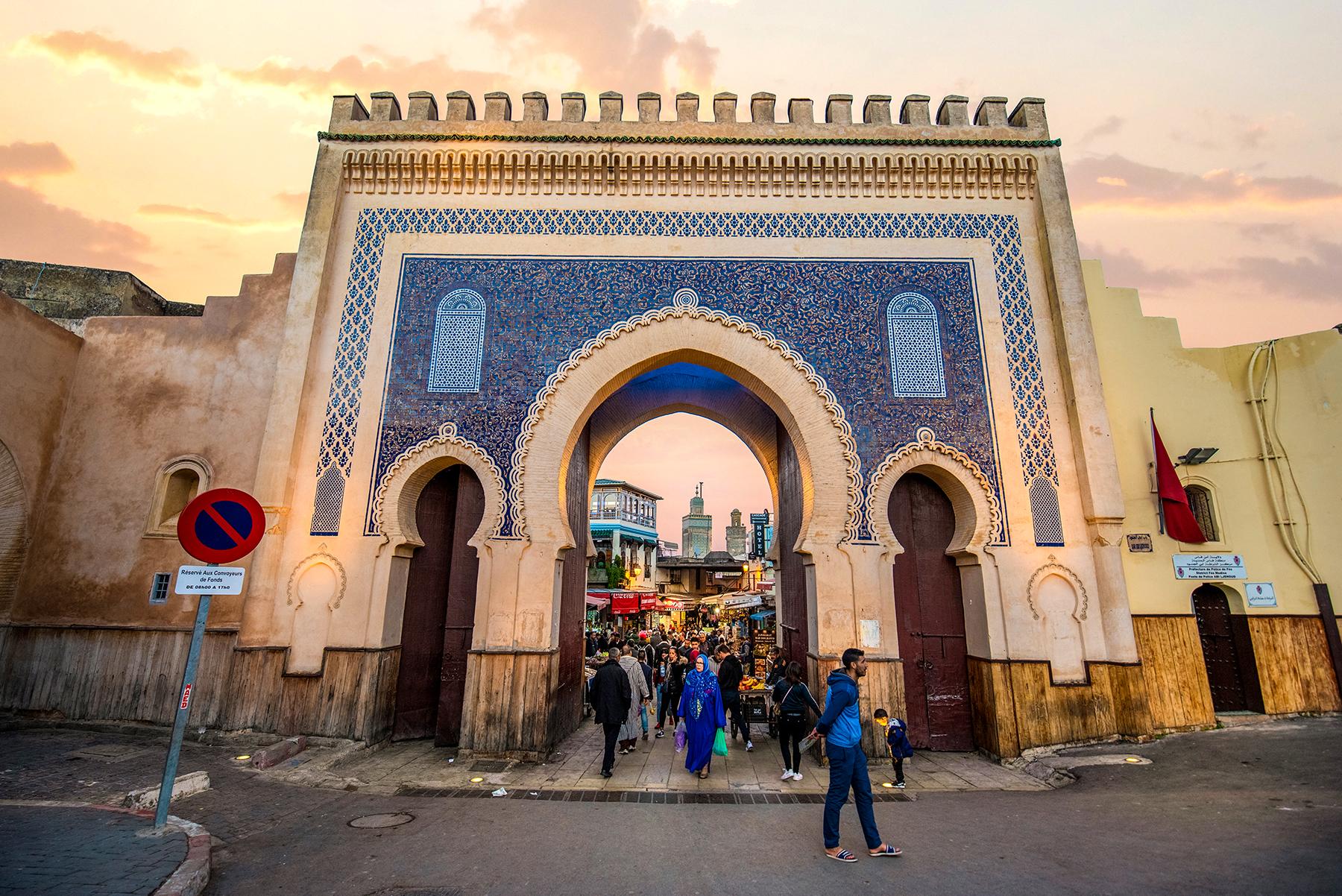Morocco’s cultural capital is unlike anywhere else on the planet.
Morocco has four imperial cities. Fez was founded by Idris I in 789, making it the oldest of the bunch. However, its rise to power didn’t happen overnight. It wasn’t until the Marinid era that Fez reached its peak, dethroning Marrakech as the capital. Much of the ancient part of the city dates back to this prosperous period. Which brings us to Fes el Bali—far from the only medina in Morocco, but certainly the most magical. Why? Well, for starters, it’s the largest car-free urban area in the world.
Inside its medieval walls is an intriguingly paradoxical place that’s at once chaotic and calm. Half the population lives in this crowded warren of narrow passages, mosques, souks, artisan workshops, madrasas (institutions for Islamic instruction), and humble homes. The sounds of daily life, multiple languages—namely Arabic, Berber, and French—and muezzin (the call to prayer) echo through the corridors. Is it overwhelming? Perhaps. But each and every colorful piece contributes to the complexity of this centuries-old puzzle.




